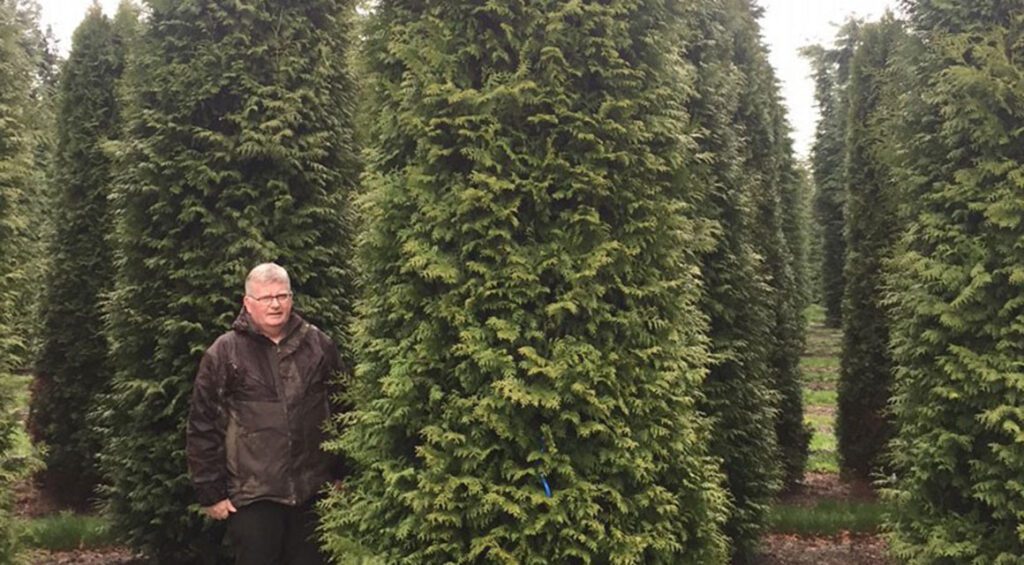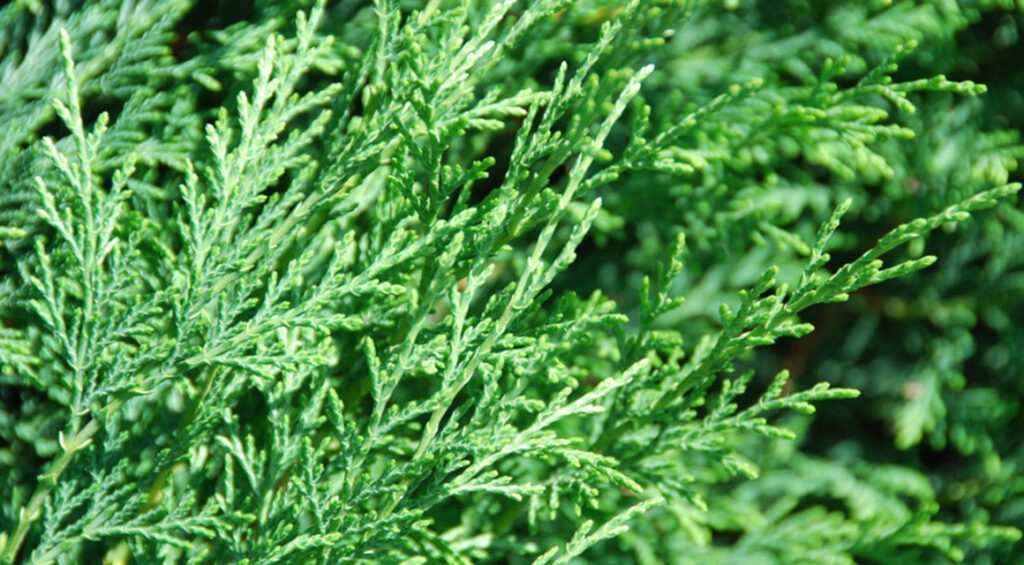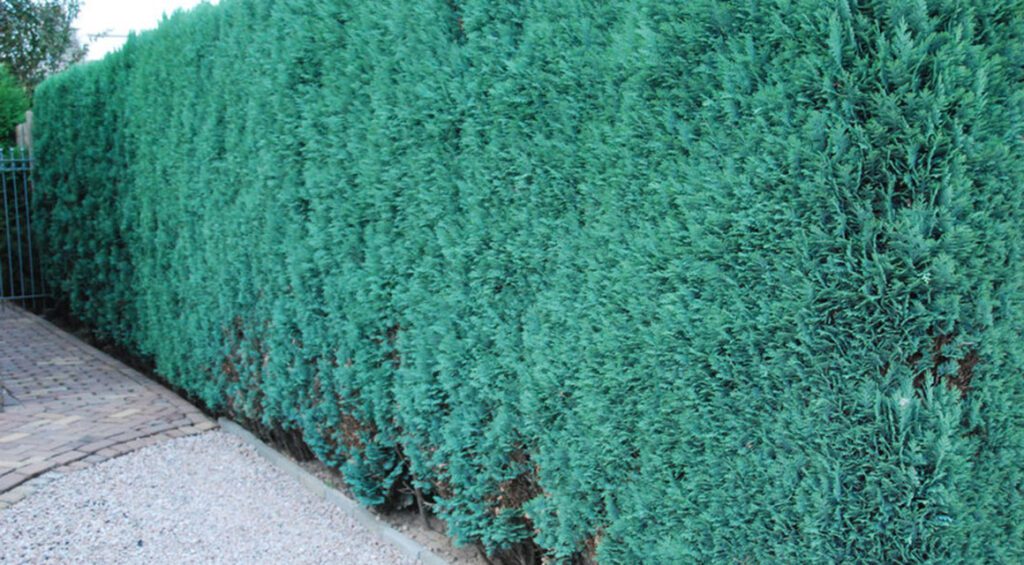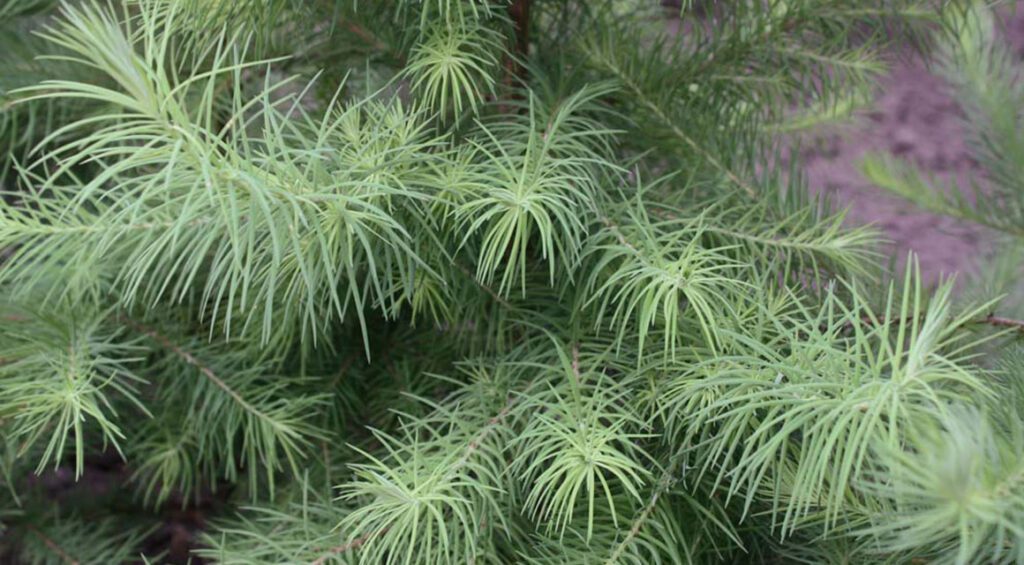Do you want to know which conifers are in your garden? Or are you toying with the idea of planting a conifer hedge, but do not yet know which one best suits the style of your garden? We’d be happy to show you how to identify the different conifers. There are more than 600 species of conifers worldwide, so it’s quite possible to lose track of them all. Not all of these conifers grow here in Europe and certainly not all of them can be used as hedge plants. We have listed for you the conifers that are often seen in our gardens.

Thuja or tree of life
A common conifer is Thuja, also called the tree of life. This conifer is characterized by rather slender growth and has a very elegant appearance. You can recognize this conifer by its shiny, bright green, scale-like needles. When you rub the needles between your fingers, the typical fragrant needle scent is released. This conifer may make a dainty impression, but don’t let its appearance fool you. Thuja thrives in most soils, is evergreen, resistant to wind, and hardy.
Thuja grows up to 30 inches a year and can tolerate both sunny and shady locations. A hedge of arborvitae protects your garden from prying eyes, stays green all year round and fits nicely into many different garden styles. In our webshop you can find different varieties of Thuja: How about the beautiful Thuja ‘Brabant’ or ‘Smaragd’? Or with the giant tree of life ‘Martin’, ‘Excelsa’ or ‘Atrovirens’? Choose for yourself which tree of life will look best in your garden.

Yew
You may not see it at first glance, but yews are also conifers. Yews are easy to distinguish from other conifers. This evergreen hedge plant can be recognized by its flat, dark green needles. Also characteristic of yews are their red berries. Unlike most other conifers, yews can be cut back to the old wood. Therefore, yew is easy to cut into a tight, uniform hedge. Yew trees can also be cut into many shapes. Let your imagination run wild.
In our web store you will find the common or European yew, which has the botanical name Taxus baccata. We also sell two other varieties: the male yew Taxus media ‘Hillii’ and the female yew Taxus media ‘Hicksii’. Do you like the formal, distinguished look of a yew hedge, but don’t want the characteristic red berries to appear? Then simply take only male plants that do not develop berries.

Leyland cypress
Leyland cypresses, like Thuja, have scaly needles. Nevertheless, it is easy to distinguish the two plants, because the growth of Thuja is much more compact than that of Leyland cypresses. Leyland cypresses also grow much faster: they can even gain up to a meter a year. A hedge of Leyland cypress will therefore quickly reach the height you desire. However, it will then take a while before the hedge is completely opaque. With regular pruning, the Leyland cypress will branch out better. A hedge of Leyland cypress should be pruned at least two to four times a year.
Leyland cypress can be identified by its green, scaly needles. There is also the Yellow Leyland cypress, which we also have in our assortment. It is characterized by its beautiful green-yellow foliage. The green variety and the Yellow Leyland Cypress are very similar. An advantage of the Yellow Leyland Cypress is that it grows a little faster and denser than its green relative. Both conifers are very popular and can always be seen in our gardens.

Cypress mock
If you see a conifer with scaly blue-gray needles, it is most likely a mock cypress. This type of conifer comes in two varieties. In addition to the blue mock cypress, the yellow variety is also great for creating a beautiful, compact and opaque hedge. Mock cypress spreads a wonderful, fresh autumn scent in the garden. This conifer does not tolerate moist soils and, like almost all conifer species, cannot be pruned back to the old wood.
It is not so easy to distinguish between the yellow Leyland cypress and the yellow false cypress. And while these conifers do indeed look very similar, there are, of course, differences. Whereas the Yellow False Cypress grows very quickly, the Yellow Leyland Cypress only gets to 30 centimeters a year. There is a yellow mock cypress that changes color in the winter: The needles then take on a beautiful green-bronze color. However, this applies exclusively to the false cypress ‘Stardust’.

More conifers
In addition to the coniferous species mentioned, there are of course more conifers that you can use as hedge plants. For example, there is the Japanese larch, which can be recognized by its soft needles that turn golden yellow in the fall and fall off in the winter. Although this conifer is not evergreen, many choose this beautiful plant when choosing a hedge. Japanese larches add variety to your garden in all seasons. The branches of the Japanese larch are reddish brown.
Another interesting conifer is the common spruce. The common spruce can grow very large and is only suitable for spacious gardens. You can recognize this conifer by its thick, shiny needles. Common spruce and Japanese larch can be distinguished, among other things, by their needles. In addition, the spruce bears its large, typical cones in autumn. Finally, we would like to draw your attention to the primeval sequoia. This deciduous tree is very suitable for moist soils. In autumn, the redwood tree turns a golden yellow color, which creates an interesting effect in your garden. However, the primeval sequoia does not grow very well in dry soils.

